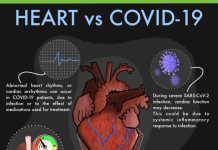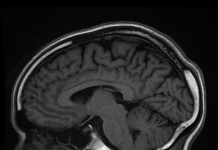Computer-based tool has been created and tested for predicting asthma in young children.
Asthma affects more than 300 million people worldwide and is among the most common chronic diseases putting a high burden on costs. Asthma is a complex disease in which inflammation occurs in airways which then prevents transfer of enough oxygen to the lungs leading to symptoms like constant coughing, shortness of breath and tightness in the chest. Asthma care via therapies is well established but good primary care for asthma is limited by lack of personnel, knowledge, training, resources etc. The global costs of asthma care are estimated to run in billions of pounds annually.
Pediatric Asthma Risk Score (PARS): a tool to predict asthma in young children
In a study published in Journal of Allergy and Clinical Immunology, scientists have designed and evaluated a decision tool called Pediatric Asthma Risk Score (PARS) which can accurately predict asthma in young children1. It consists of criterion like demographic data and clinical factors of patients unlike established tools. In comparison to the gold standard Asthma Predictive Score (API), 43 percent more children were marked by PARS score as ranging from mild to moderate risk of asthma. Children with high risk factors were predicted similar by both these tools. It is important to identify children with mild or moderate risk as they need and can respond better to asthma prevention strategies.
PARS tool was designed by utilizing data/factors which predicted asthma development from Cincinnati Childhood Allergy and Air Pollution cohort study. This study comprised of around 800 infants of whom at least one parent had at least one symptom of allergy. The children were clinically examined every year at the ages 1, 2, 3, 4 and 7 for onset of allergic disease using skin testing. Researchers checked for 15 aeroallergens (airborne) and food allergens including cat, mold, cow’s milk, eggs and cockroach. A total of 589 children were tested for asthma development at 7 years of age and diagnosed by using standard measurement of lung function like spirometric tests. 16 percent of these children had asthma and their parents were queried to understand various risk factors which might have contributed to it. Variables which predicted asthma using PARS were wheezing, sensitization to 2 or more food and/or airborne allergens and African American race. These children had at least one parent with asthma and they also had other ailments like eczema and allergic rhinitis at a young age.
The new model of PARS was 11 percent more sensitive than gold standard API. PARS is also better and far less invasive than around 30 established models which are used to predict development of asthma. PARS is easier to implement and this study includes a PARS sheet containing the decision tool and clinical interpretations. PARS also has a web application2 and apps development is currently in progress.
In comparison to the gold standard Asthma Predictive Score (API) developed and used since 2000, 43 percent more children were marked by PARS score as ranging from mild to moderate risk of asthma as API only provides only a ‘yes’ or a ‘no’ for the risk. Children with high risk factors were predicted similar by both these tools. It is critical to identify children with mild or moderate risk as they immediately need and can respond better to asthma prevention strategies with early intervention at a very young age. This can be helpful in alleviating asthma before complications begin.
The new model of PARS was 11 percent more sensitive and also more precise than gold standard API for predicting asthma in early life. The results were confirmed in another study conducted in United Kingdom which did not include African-Americans. PARS is a more robust, valid and generalized tool, plus it is a less invasive method compared to 30 established models. Predicting mild to moderate asthma in children as young as 1-2 years can have a major impact on controlling this disease. PARS is easy to implement and this study includes a PARS sheet containing the decision tool and clinical interpretations. PARS also has a web application2 and apps are available for smartphones.
***
{You may read the original research paper by clicking the DOI link given below in the list of cited source(s)}
Source(s)
1. Jocelyn M. 2019. A Pediatric Asthma Risk Score to better predict asthma development in young children. Journal of Allergy and Clinical Immunology. https://doi.org/10.1016/j.jaci.2018.09.037
2. Pediatric Asthma Risk Score. 2019. Cincinnati Children’s. https://pars.research.cchmc.org [Accessed March 10 2019]



































